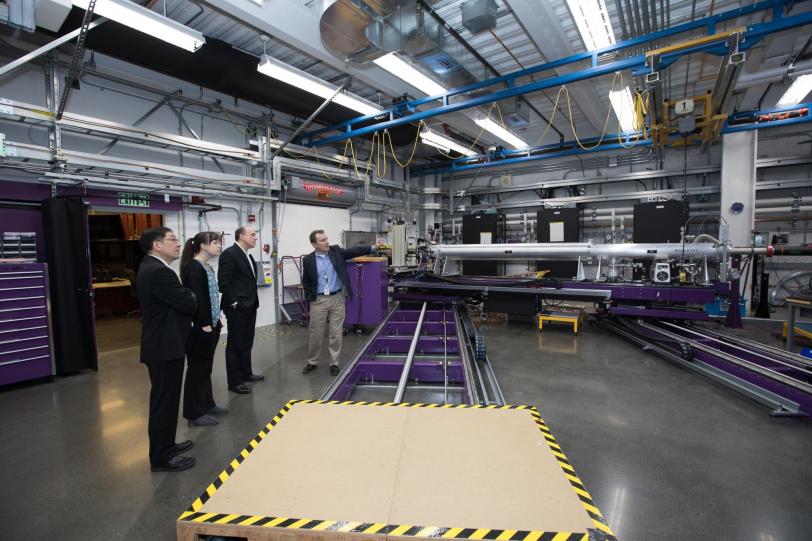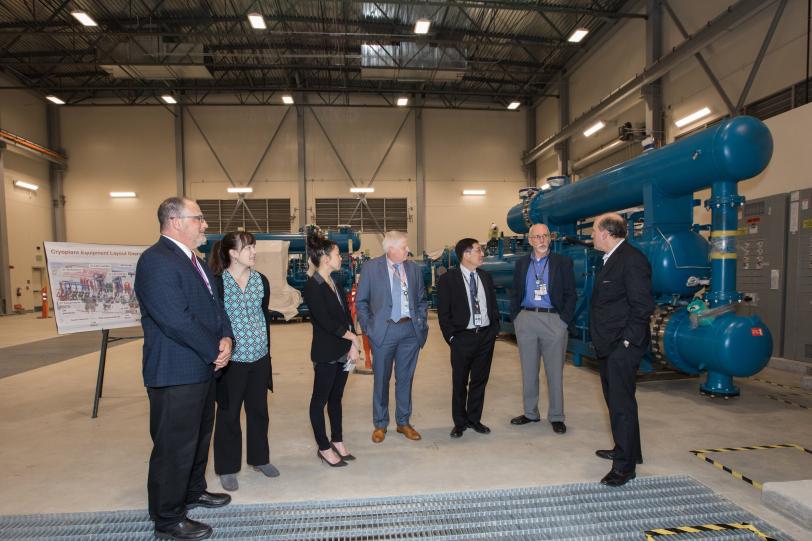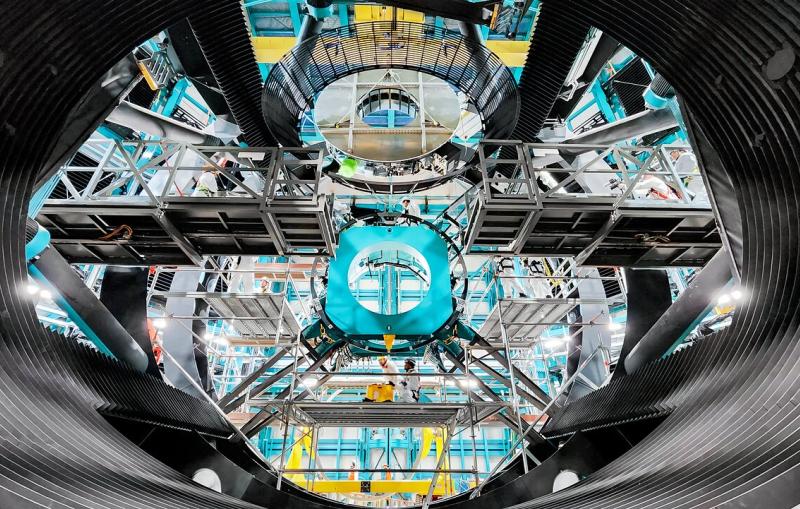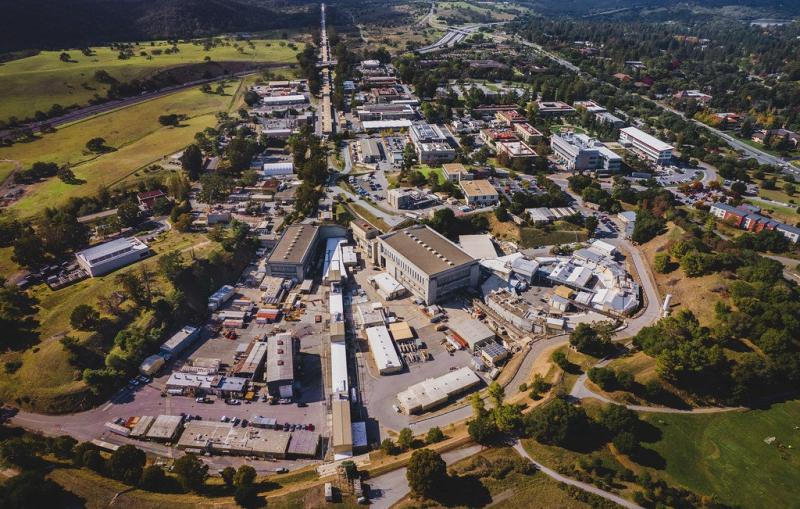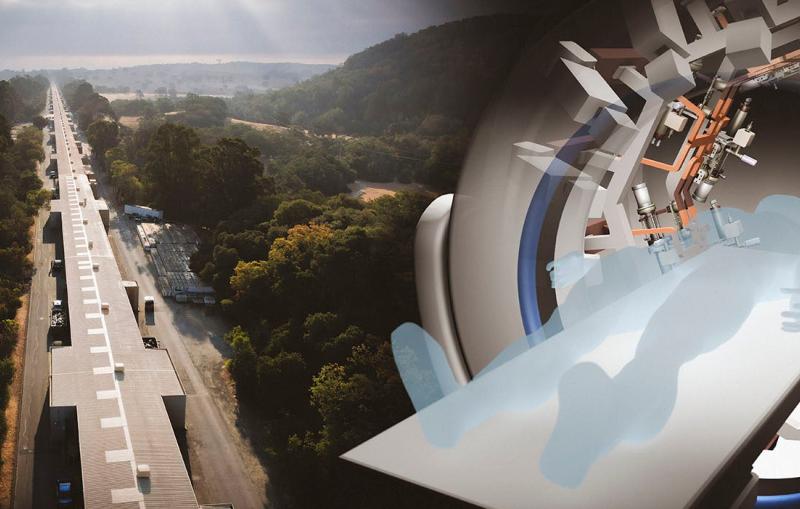DOE Under Secretary for Science Paul Dabbar Visits SLAC
Dabbar toured the lab to learn about major initiatives, including LCLS-II and industry partnerships.
By Andrew Gordon
Paul Dabbar, the Department of Energy Under Secretary for Science, visited SLAC National Accelerator Laboratory Jan. 17 for a day of tours and discussions on how the lab is driving scientific innovation. His visit included meetings with SLAC and Stanford leadership, as well as researchers and scientists involved in the lab’s X-ray science, particle physics and astrophysics, technology innovation and applied energy programs.
"We’re pleased Under Secretary Dabbar had the opportunity to see the breadth and depth of the research conducted at SLAC and the unique facilities that attract researchers from around the world,” said SLAC Director Chi-Chang Kao. “We're proud to showcase the impact our science is having as we continue to evolve and grow.”
Dabbar had the opportunity to see the lab’s future firsthand with a visit to the construction site of a major upgrade to the Linac Coherent Light Source (LCLS), the world’s first hard X-ray free-electron laser. The upgrade, LCLS-II, will add a second X-ray laser beam that’s 10,000 times brighter, on average, than the first one and fires 8,000 times faster, up to a million pulses per second. The Under Secretary also met with lab leadership and industry partners to discuss technology transfer and future opportunities; toured the new Arrillaga Science Center to learn about the next phase of photon science at SLAC; and put on a pair of 3-D glasses to immerse himself in cosmology visualizations at the Kavli Institute for Particle Astrophysics and Cosmology (KIPAC).
Dabbar also learned about numerous innovations in the DOE’s contract with Stanford, aimed at more effectively and efficiently managing SLAC. Stanford is piloting this new contract model, which could be applied to other national labs if successful.
Dabbar serves as the DOE’s principal adviser on fundamental energy research, energy technologies and science, with a focus on nuclear and high-energy particle physics, basic energy, advanced computing, fusion and biological and environmental research; he also oversees the Office of Science and national labs. Prior to his confirmation in November 2017, Dabbar was a senior energy executive and nuclear submarine officer.
Contact
For questions or comments, contact the SLAC Office of Communications at communications@slac.stanford.edu.
SLAC is a multi-program laboratory exploring frontier questions in photon science, astrophysics, particle physics and accelerator research. Located in Menlo Park, Calif., SLAC is operated by Stanford University for the U.S. Department of Energy's Office of Science.
SLAC National Accelerator Laboratory is supported by the Office of Science of the U.S. Department of Energy. The Office of Science is the single largest supporter of basic research in the physical sciences in the United States, and is working to address some of the most pressing challenges of our time. For more information, please visit science.energy.gov.
